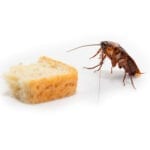Termites are invasive insects that can do extensive damage to your home, often without you ever knowing they’re there until it’s too late. It’s important to familiarize yourself with the warning signs of termites so you can take immediate action to eliminate these destructive creatures from your home before they have the chance to do too much damage. Follow these easy steps to learn how to spot termite damage and make sure your home stays safe from these pests!
What are termites?
Termites (Isoptera) are eusocial insects that live in colonies in nests, or mounds, underground. They are sometimes called white ants, although they are not true ants. They eat cellulose and other complex carbohydrates and have a mutualistic relationship with certain plants by spreading nutrients throughout their system. Termites feed only on living and dead plant material and do not eat woody material such as tree trunks; they obtain all of their moisture from saps produced by plants. They can eat up to 10 times their weight each day. The worker caste has broadening shoulders and constricted waists, which causes its body to be divided into three segments, giving it an elongated appearance compared to many other insects. This characteristic is shared only with certain wasp families.
In temperate climates, colonies produce new reproductive individuals once or twice a year and usually survive for two to five years (sometimes longer). In tropical areas where temperatures are consistently high, however, colonies may reproduce continuously. A typical colony contains 300–3,000 individuals at any given time though there can be well over 20,000 workers in large mature nest complexes. A single nest may house a population consisting of one queen plus scores of workers and hundreds of males and females depending on the species. Termite queens can lay thousands of eggs in one day.
Like some social bees and wasps, termites mostly communicate with pheromones. These chemical cues are used to mark food and nesting sites, distinguish between nestmates and strangers, regulate reproduction, organize daily activities, maintain alignment within tunnels while building structures, repel intruders and defend against predators. Colonies contain few or no male workers (depending on species); reproduction depends on a genetically superior queen whose sole purpose is to produce more soldiers who will go out in search of new food sources. Soldiers have extremely large heads relative to their bodies with powerful mandibles capable of decapitating enemies several times their size.

Early detection
The key to successful termite management is early detection. Since these insects cause so much damage and spread so quickly, it’s important to catch them in their earliest stages. Here are a few tips for how you can identify signs of infestation before they become a serious problem.
Step 1 – Inspect Your Home
First and foremost, you should always inspect your home for signs of a possible infestation. Do not rely on just one method of inspection; instead, use multiple methods so that you can get a full picture of what’s going on. You should also never hesitate to call in a professional for an independent opinion. In many cases, they will be able to do a more thorough job than you could ever hope to achieve. Here at Ivey’s Carpet Cleaning and Pest Control, we use several tools to thoroughly detect signs of termite infestation and damage. We use state-of-the-art technology such as infrared and thermal imaging cameras, in conjunction with traditional methods. If you need a termite inspection in Maryborough, Hervey Bay, Tiaro or surrounds contact us today.
Step 2 – Look For Damage From Termites
Even if you can’t see termites, there are certain things you can look for in your home to determine whether or not you have an infestation. Check for wood that looks like it’s been sanded down, small piles of sawdust-like particles (especially if they smell sweet), and leaking water pipes or leaky sinks that might be caused by weakened wood around them.
Here are some signs that your home may be affected by termites:
1. Visible damage to drywall
2. Swarming insects in or around your home
3. Small holes in your floor, wall or baseboards
4. Popping sounds
5. Cracking floors
6. A build-up of frass (dark substrate produced by termites)
7. Cracks in foundations or elsewhere
Step 3 – What can you do if you suspect your home has an infestation?
If you suspect that your home has an infestation, it’s important not to panic. Some pests can be taken care of without professional help, however, it’s important to seek professional help when dealing with termites as home remedies rarely work. If a problem is left unchecked for too long, costly repairs could be necessary as termites can damage the structural integrity of your house or any wooden structures. If you suspect an infestation, call your local Maryborough pest control or termite exterminator immediately!
Tips for protecting your home from termite damage
The best way to protect your home from termite damage is to make sure your home is getting regular termite inspections and treatments. This will greatly reduce your risk of having termites enter your property. At Ivey’s Carpet Cleaning and Pest Control, we offer a range of pest control services including termite inspections and treatments, pre-purchase inspections and routine pest control treatments. Call us today on 4122 4148 or fill out our form here for a FREE quote.



